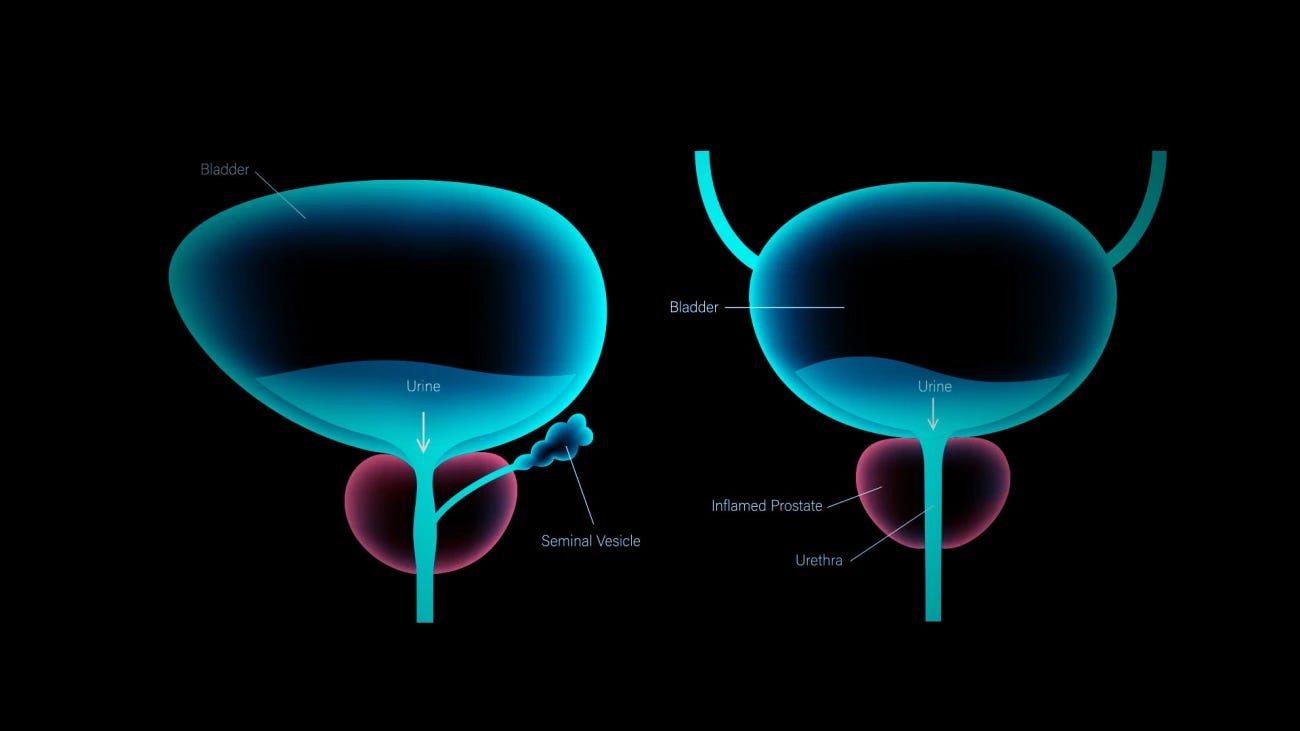Enlarged Prostate (BPH): Causes and Overview
As men get older, one of the most common health issues they face is an enlarged prostate.
This condition is known as benign prostatic hyperplasia (BPH) – "benign" meaning it’s not cancerous. The prostate is a small gland that surrounds the urethra (the tube that carries urine out from the bladder). When the prostate enlarges with BPH, it can squeeze the urethra and lead to bothersome urinary symptoms. BPH is very common: by age 50, many men have some prostate enlargement, and by age 80, most men do. While BPH isn’t life-threatening, it can affect quality of life, so it’s useful to understand why it happens and what can be done about it.
What Happens When the Prostate Enlarges?
As the prostate gland gradually grows in size (as it does in BPH), it may press on the urethra – imagine stepping on a hose, which slows the water flow. This narrowing of the urinary passage often leads to problems such as a weak urine stream, difficulty starting urination, or a sense that the bladder isn’t fully empty. The bladder also has to push harder to get urine past the obstruction, which can make it irritable. That’s why men with an enlarged prostate often feel the urge to urinate more frequently, especially at night.
Importantly, BPH is benign – it is not prostate cancer and does not increase the risk of cancer. Having an enlarged prostate does not increase your risk of prostate cancer. The two conditions are separate (though they can coexist in the same person by coincidence).
Causes and Risk Factors
Why does the prostate enlarge? The exact cause isn’t fully understood, but it is closely linked to the aging process and shifting hormone levels. As men age, testosterone levels gradually change and other hormones (like dihydrotestosterone, or DHT) may spur the prostate cells to grow. Over time, this results in a larger prostate for many men.
Several factors raise the likelihood of developing BPH:
Aging: BPH is uncommon in men under 40, but the chances rise steadily with age. Getting older is the biggest risk factor.
Family history: Genetics can play a role. If a close male relative (like your father or brothers) had BPH, your own risk is higher.
Lifestyle: Obesity and lack of exercise seem to increase the risk of an enlarged prostate. On the flip side, staying physically active and maintaining a healthy weight might help lower your risk.
Keep in mind that if a man lives long enough, some prostate enlargement is almost inevitable. You can’t completely prevent BPH, but a healthy lifestyle may help slow its progression or reduce its severity.
Conclusion
BPH is a very common part of aging for men – it refers to a non-cancerous enlargement of the prostate gland that can cause annoying urinary issues. The reassuring news is that an enlarged prostate is treatable and not life-threatening. Many men manage BPH successfully through lifestyle changes, medications, or minor procedures when needed. If you notice changes in your urinary habits as you get older, talk to your healthcare provider. Knowing that BPH is common and manageable can put your mind at ease and encourage you to seek appropriate solutions to maintain a good quality of life.



